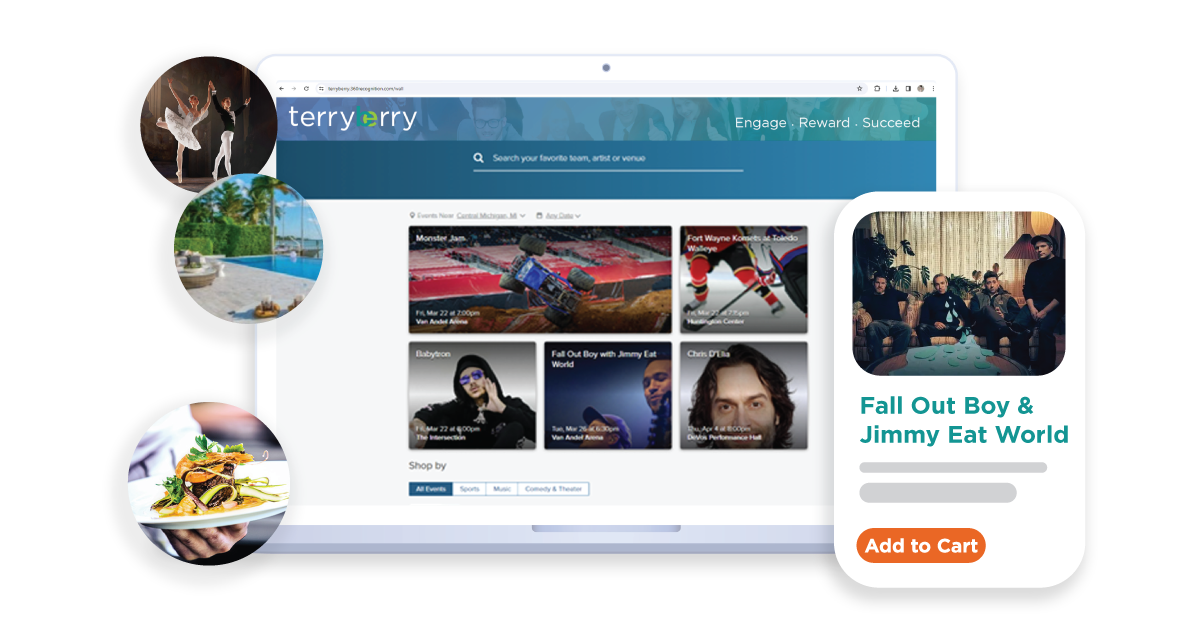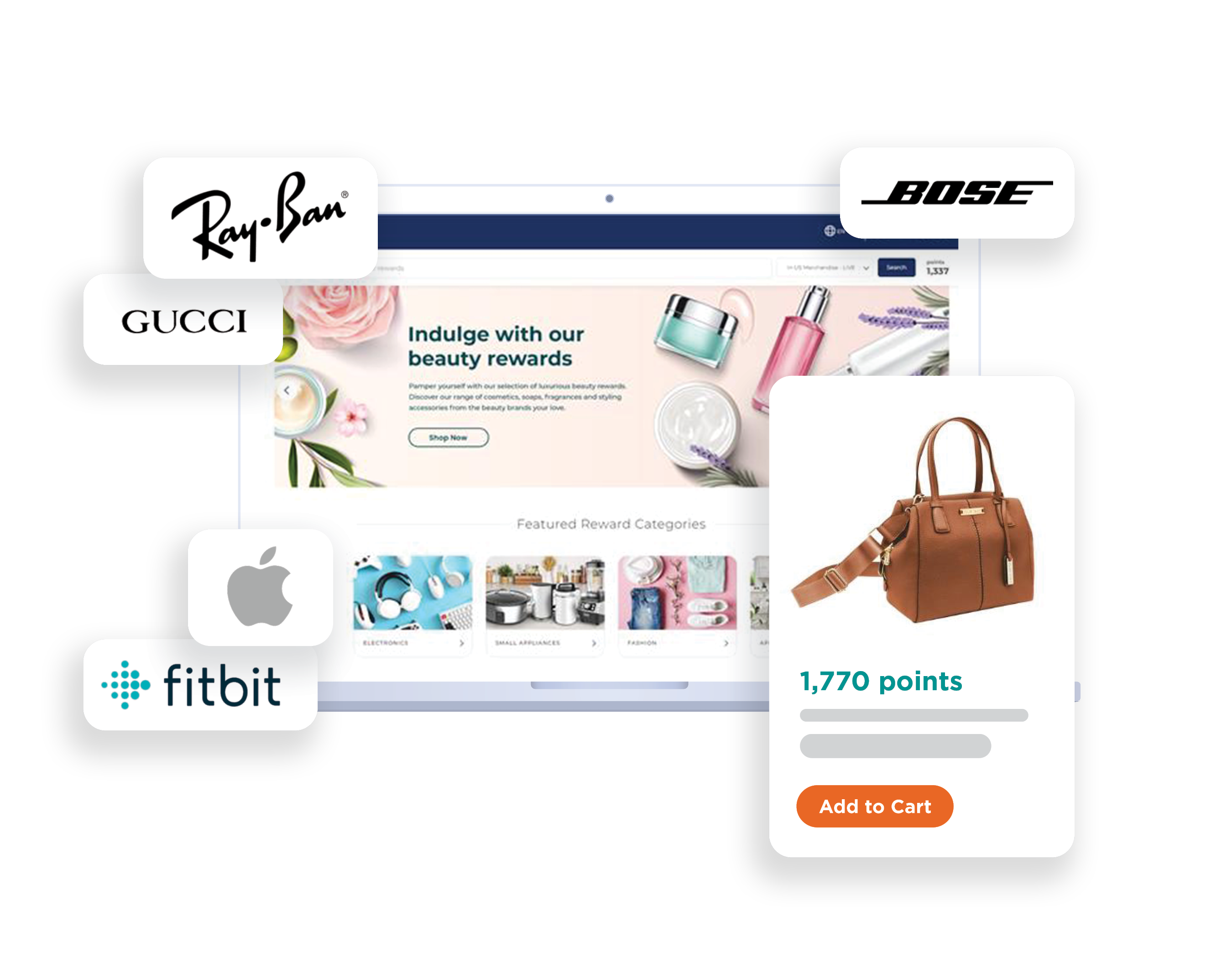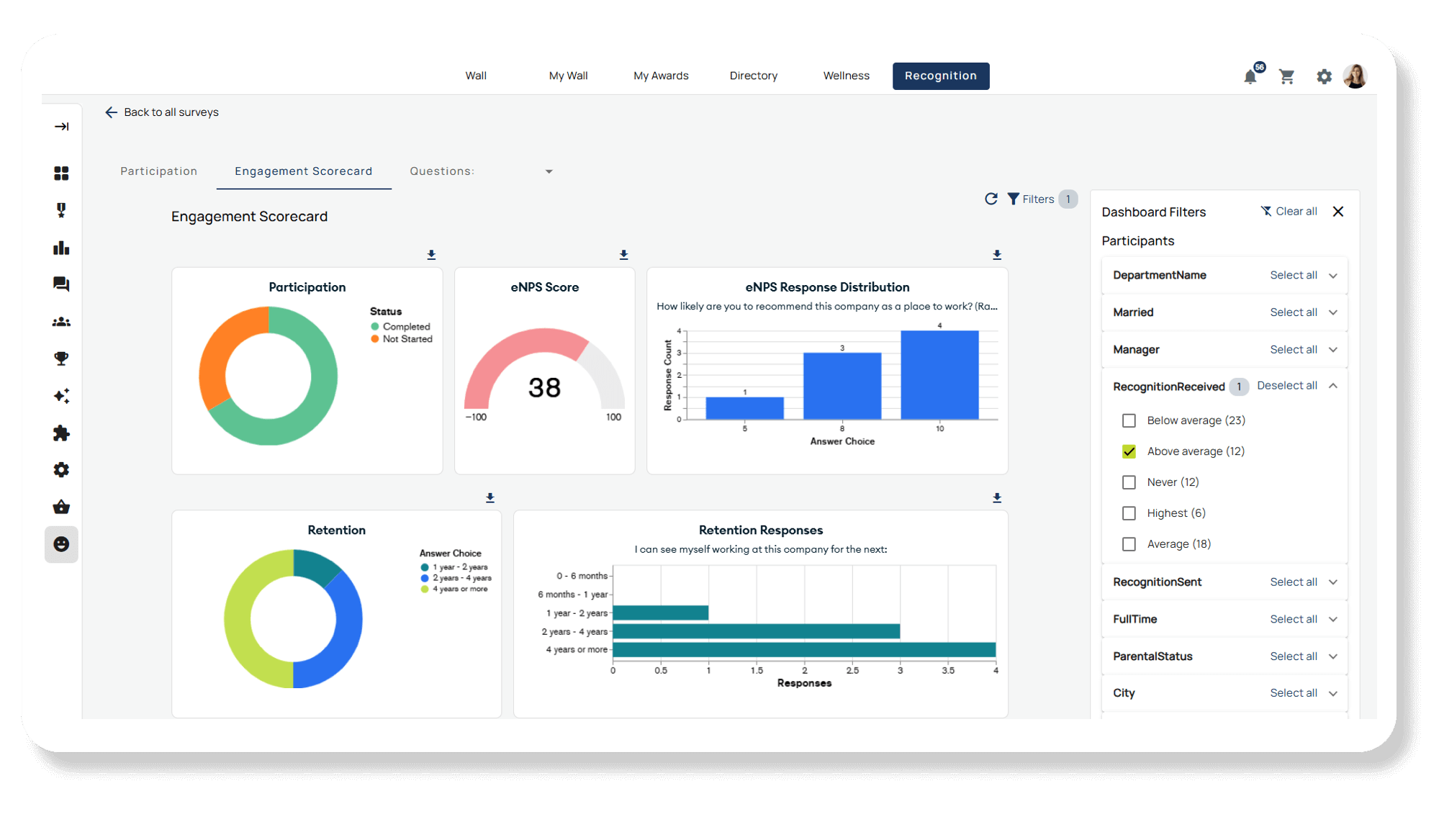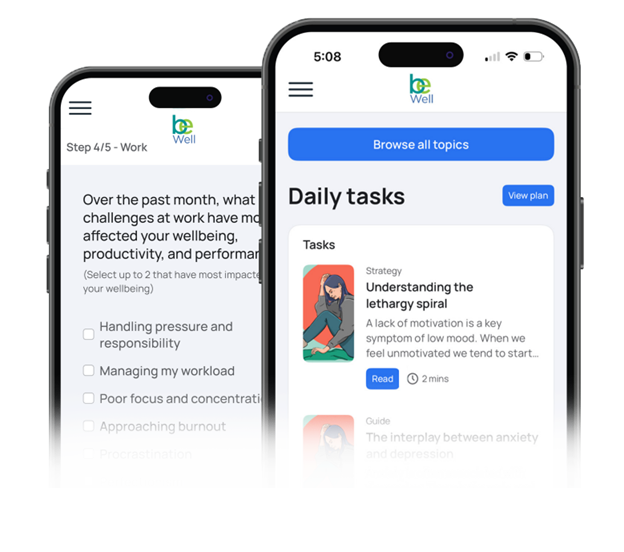April 16, 2025

Wellness program incentives can mean the difference between having a wellness program and having an effective wellness program. While these programs are great for promoting healthy behaviors and better health among employees, the issue, however, can be finding ways to motivate employees to participate in these programs.
Some employees will naturally be motivated to join – these tend to be people who already have a wellness routine in their personal lives. But to reach others, companies may need to develop wellness incentive programs.
Here, we’ll discuss what workplace wellness incentives are, how they can help, and offer ideas you can use within your organization to drive participation.
What are Wellness Incentives?
Wellness incentives are rewards given to employees for their participation in a company’s wellness program. They can also be given for achieving certain goals or taking part in certain wellness activities.
Incentives for employee wellness programs are designed to motivate and encourage employees to participate in healthy behaviors that lead to lasting positive changes.
For example, an employee may be more inclined to take a health risk assessment if they will receive a discount on their insurance premium for doing so. In this case, the discount is the wellness incentive.
These incentives can take various forms and are aimed at creating a positive and engaging workplace culture while resulting in health benefits for the employee.
It’s essential to tailor incentives to the preferences and needs of your workforce. A well-rounded and customizable approach to wellness incentives can contribute to the success of corporate wellness programs by making them inclusive and appealing to a diverse group of employees.
Why Offer Wellness Program Incentives
As mentioned, the goal of a wellness program incentive is to boost engagement in your program. The goal of a wellness program itself is to help employees adopt a healthier lifestyle, which in turn can benefit companies.
These benefits include:
Reduction in Healthcare Costs: By investing in preventive measures and encouraging healthier lifestyles, companies can potentially reduce healthcare costs associated with treating chronic conditions and preventable illnesses.
This is particularly important as healthcare expenses can be a significant financial burden for both employers and employees.
Increased Productivity: Healthier employees are often more productive. Regular exercise and a focus on well-being can enhance energy levels, cognitive function, and overall job performance. This, in turn, can increase productivity and efficiency in the workplace.
Return on Investment: The average return on investment (ROI) for corporate wellness programs is six-to-one.
Reduced Absenteeism: A focus on preventive healthcare can lead to a decrease in absenteeism due to illness. When employees are healthier, they are less likely to take sick days, resulting in increased continuity and productivity in the workplace. So much so, wellness programs can reduce absenteeism by 14-19%.
Improve Culture: 77% of employees say that workplace wellness programs positively impact company culture and employee engagement. This may be because participating in wellness activities together fosters a sense of teamwork and camaraderie among employees.
Team-building exercises and group challenges can strengthen relationships and improve the overall morale of the workforce.
Stress Reduction: Many wellness programs include components that can help employees manage stress. Reducing stress levels can contribute to a healthier work environment and improved overall mental health.
An employee wellness program can contribute to a positive work environment, improve employee health and well-being, and yield tangible benefits for both individuals and the organization. They are an investment in the long-term success and sustainability of a company.
But remember, these benefits are only achieved if you have active participation in your wellness offering. So, health incentives can encourage them to join - a win for employees and companies alike.
RELATED: A Step-By-Step Guide to Developing Employee Wellness Programs
Incentive Program Parameters
First, knowing when to offer incentives can be a helpful starting point. Before establishing incentives for employee wellness programs, consider the criteria for winning the incentive in the first place.

Participation-Based Incentives
Participation-based wellness incentives are used to increase participant involvement in a program or initiative. The goal of participation incentives is purely to get people involved and complete a wellness-related objective. This might be competing in a walking challenge or participating in a smoking cessation program for tobacco users.
This can be perfect for companies that are starting a new wellness program. This is because employees don’t yet know the value of your wellness program. Asking employees to voluntarily commit to a program can be a big ask. Participation incentives, therefore, are almost like a risk-free guarantee for employees to try out your program.
Because this option will likely generate many participants, you might find a random selection for choosing an incentive winner is your best option. Employees then enter for the chance to win rather than a guaranteed prize.
Progress-Based Incentives
Once you have employee buy-in for your wellness program, participation incentives help ensure they continue with it. We all know how self-improvement goals can go. You start with the best intentions, but when things get tough, suddenly the goal doesn’t seem quite so worth it.
This is where progress-based incentives can help employees see wellness challenges through to the end. Progress incentives can also encourage behavior change by helping employees push themselves to reach new personal records.
Consider offering 50 points on your employee recognition platform for every 50,000 steps taken in a step challenge. Or award gift cards when people reach a consecutive streak in a wellness practice, like reaching 5 straight days of packing a lunch or exercising.
Results-Based Incentives
Lastly, there are results-based incentive rewards. These can be a fun way to foster healthy competition and encourage enthusiastic participation. These incentives are things like prizes for the most steps taken in a step challenge or the most consecutive days of meditation.
Keep in mind, that results-based incentive rewards can also be awarded to people who are most improved. This can be a great way to foster inclusivity and avoid rewarding only the members of your team who are already physically fit.

Designing Effective Incentives
Effective incentives are crucial for motivating employees to participate in wellness programs. These incentives can be designed to reward healthy behaviors, such as completing a health risk assessment or participating in a wellness challenge. By offering participation-based incentives, such as cash rewards or gift cards, employers can encourage employees to engage in wellness activities.
Tailoring incentives to meet the specific needs of employees is essential. For instance, offering gym memberships or wellness workshops can cater to different interests and preferences. The dollar amount of incentives can vary, but it’s important to ensure that they are substantial enough to motivate employees to take action.
Incentives can also be used to encourage employees to make healthier choices, such as eating nutritious foods or exercising regularly. By promoting employee engagement and motivation, incentives help create a culture of wellness and healthy behaviors. Recognizing and rewarding employees for their participation in wellness programs reinforces positive behavior and encourages continued involvement.
Employers can use incentives to promote employee well-being and reduce health risks. By designing effective incentives, companies can foster a healthier, more engaged workforce, ultimately leading to improved productivity and job satisfaction.
16 Types of Wellness Incentives for Employee Wellness Programs
Before coming up with wellness incentive programs, it can be helpful to determine which types of incentives you’d like to offer and for what.
Begin by determining if you have a budget in place and if you’d like to offer cost-based incentives versus no-cost wellness incentives.
Cost-Based Incentive Ideas
Cost incentives are usually items that can be given to employees by their employer to make participating in a wellness program easier or more enjoyable. These can range from water bottles to gym memberships to wearable devices.
Here are some common cost-based incentive ideas for employee wellness programs:
1. Fitness Memberships and Subscriptions:
Consider subsidizing or providing discounted memberships to local gyms or on-site fitness facilities to help employees reach their wellness goals and live healthy lifestyles.
Terryberry offers an employee mental well-being training and support app, Be Well, that's perfect for promoting mental wellness at work.
2. Health Screenings and Assessments:
Offering free or subsidized screenings for health risks, check-ups, and assessments. Providing incentives for employees to complete these screenings can encourage proactive health management.
3. Health Insurance Discounts:
Offer a discount on insurance premiums for completing a health assessment, joining a wellness program, or completing a year enrolled in a wellness program.
4. Healthy Snacks and Meals:
Stock the workplace with healthy snacks or provide nutritious meals during work hours to help promote physical wellness. Go a step further with a simple catered lunch - or put a twist on classic catering and instead offer a smoothie or yogurt bar with fresh fruit and granola.
5. Wellness Devices and Accessories:
Subsidize or provide fitness trackers, smartwatches, or other wellness devices that can help employees track their physical activity and health metrics. Also consider throwing in small gym equipment, like water bottles or yoga mats.
6. Field Trips:
Take your wellness participants off-campus. Maybe it’s an afternoon hike, a yoga class in the park, or a healthy cooking class, everyone loves getting away from the office for an hour or two.
If you’d like to give a more personal option, consider gifting experiences. Gifting things like event tickets to a concert or kayaking lessons allows people to step out of their comfort zone and do something they’ll always remember. Experiences are also available within Terryberry’s reward platform.

7. Recognition and Awards:
Recognize and publicly acknowledge employees who actively participate in wellness programs or achieve health-related goals. An easy way to do this is through an employee recognition program like Terryberry's social recognition platform.
8. Wellness Points Programs:
Implement a points-based system where employees earn points for participating in wellness activities. These points can then be redeemed for rewards.
9. Employee Assistance Programs (EAPs):
Offer access to counseling services, stress management resources, and mental health support through an employee assistance program.
10. Company Swag and Merchandise:
Provide branded merchandise, such as apparel, water bottles, or fitness gear, as rewards for engagement in wellness initiatives.

11. Team-Building Events:
Organize team-building events centered around wellness, such as group fitness classes, hiking trips, or wellness retreats.
12. Health Savings Accounts (HSAs) or Flexible Spending Accounts (FSAs):
Contribute to HSAs or FSAs to help employees cover eligible health and wellness expenses.
Types of No-Cost-Based Incentives
No-cost incentives don’t require any additional costs or budget and can be highly customizable. For example, a wellness incentive program could include offering extra breaks throughout the day or more work-from-home days.
Here are some more no-cost incentive ideas:
13. Paid Time Off (PTO):
Offer additional time off for wellness-related activities, such as attending fitness classes or health screenings.
14. Flexible Work Schedules:
Allowing employees flexibility in their work hours to accommodate wellness activities or gym sessions.
15. Wellness Challenges and Competitions:
Creating friendly competitions with rewards for achieving specific healthy activities or fitness goals. This could include step challenges, journaling competitions, or team-based activities.
16. Education and Training Opportunities:
Providing workshops, seminars, or access to online courses on topics related to health, nutrition, stress management, and overall well-being.
RELATED: How to Engage Employees with a Corporate Wellness Program
Measuring Success

Measuring the success of a wellness program is essential to determine its effectiveness and make necessary adjustments. Employers can use various metrics, such as participation rates, health risk assessments, and biometric screenings, to gauge the success of their wellness initiatives.
Data analytics play a crucial role in tracking employee participation and engagement in wellness programs. By analyzing this data, employers can identify trends and areas for improvement. Measuring the return on investment (ROI) of a wellness program helps determine its financial impact and overall effectiveness.
Surveys and focus groups are valuable tools for gathering feedback from employees. This feedback provides insights into what aspects of the wellness program are working well and what areas need improvement. Benchmarking against other companies can also help employers understand how their wellness program compares to industry standards.
Measuring the success of a wellness program helps employers make informed decisions about program design and implementation. It also allows them to identify the effectiveness of incentives and make necessary adjustments. Ultimately, measuring success helps create a culture of wellness and healthy behaviors, leading to a more engaged and productive workforce.
Getting Started
Ready to get started with an employee wellness program or to begin an incentive program? That's where we can help.
Terryberry provides solutions to help drive performance and retention through effective employee engagement. These solutions include:
- Wellness Programs: We make it easy to run wellness programs and activity challenges that increase engagement, expand corporate health, and build team camaraderie.
- Pulse Survey Software: Be Heard is an employee engagement survey solution that's designed to enhance your employee experience while fueling business performance.
- Service Awards and Performance Awards: Recognize and reward employees based on years of service awards, anniversaries, or performance.
- Social Recognition: Empower your employees and managers to recognize their peers and celebrate successes with an easy-to-use social recognition application.
See for yourself. Schedule a demo with one of our experts to learn how Terryberry can transform your employee engagement with our powerful all-in-one platform.



